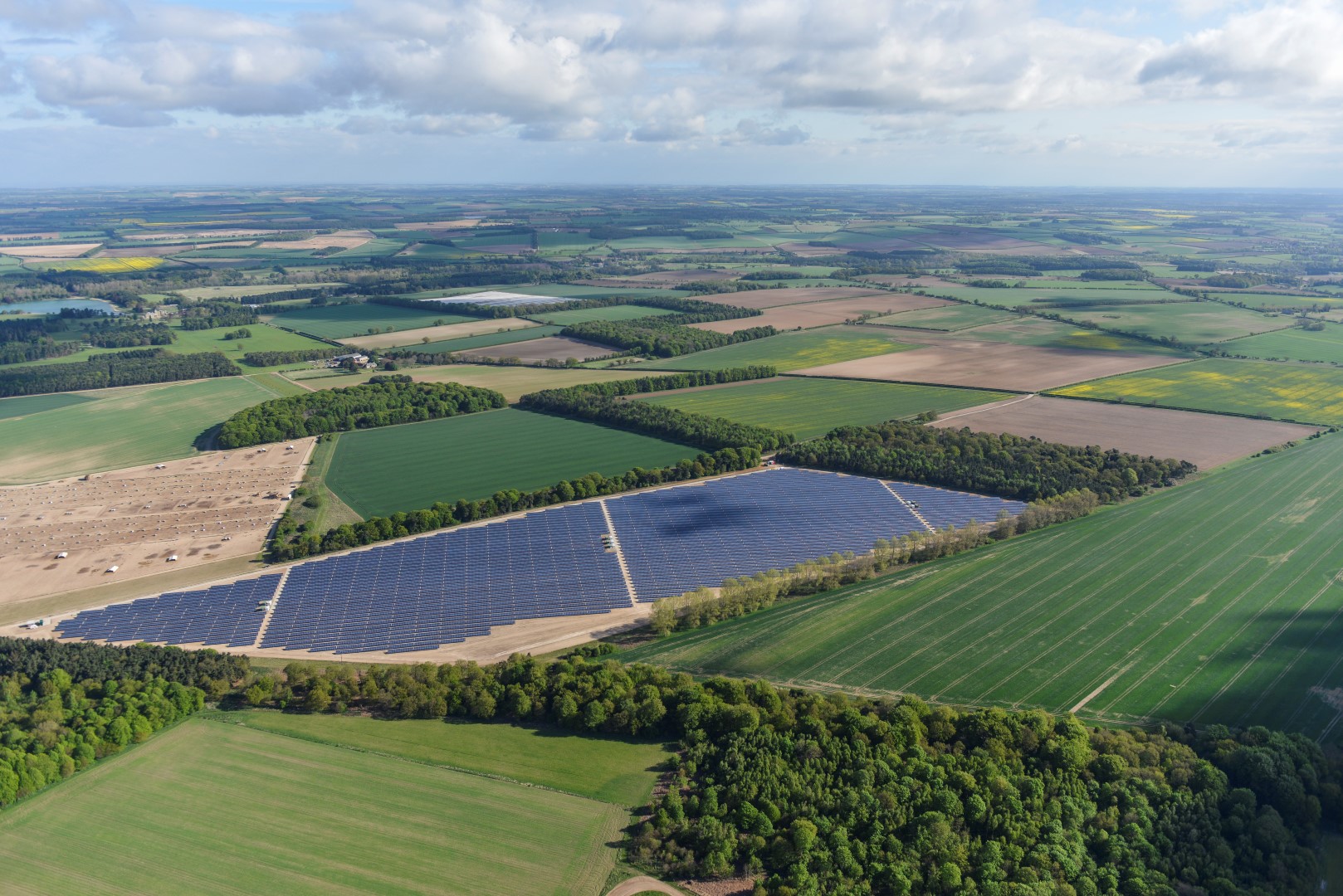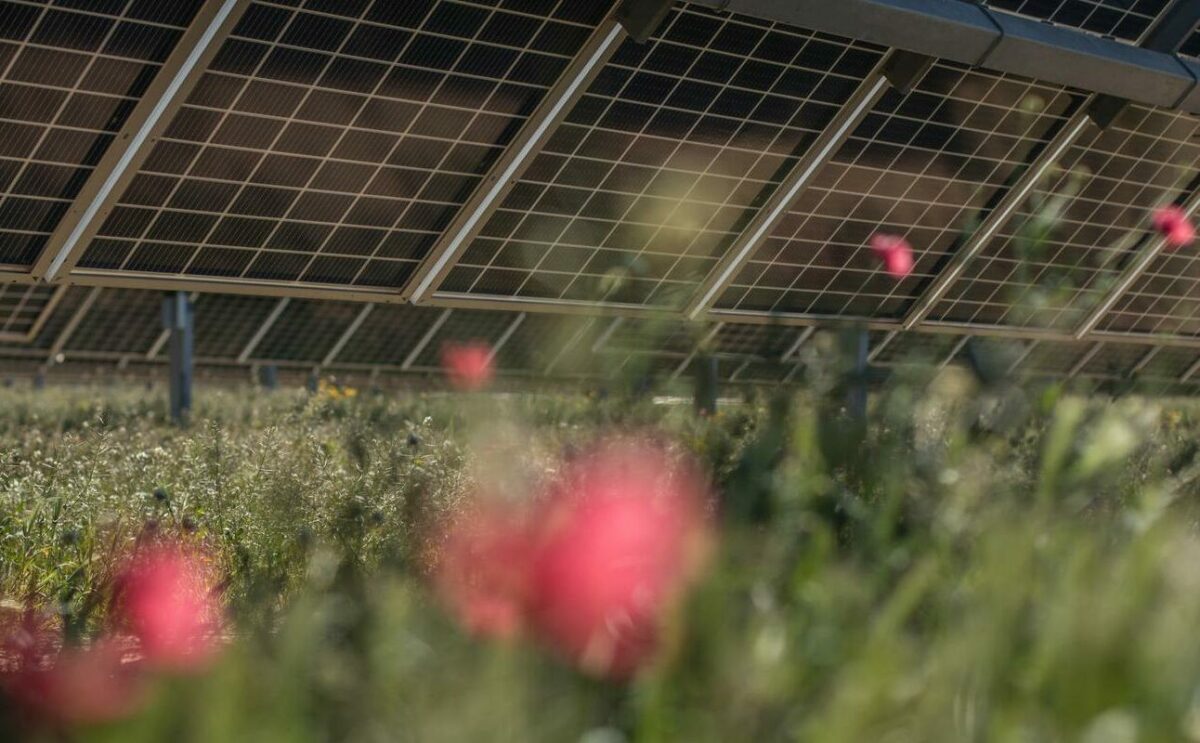Could Your Solar Farm "very well just blow away"? – Addressing Misconceptions through the Planning Process
Reading an article in the Irish Examiner, my eye was caught by a quote from the Irish Farming Association’s chair, raising concerns that solar arrays were untested in Ireland and given weather conditions there, “[t]hese things could very well just blow away”. I wondered just how windy it gets there (with visions of ‘cow-nadoes’ sweeping across the farmland).
Perhaps I should back the truck up a little and introduce myself. I’m Penny Laurenson, Head of Planning at Lightsource – that’s Penny like the coin, not the apron (apparently ‘Pinny’ is how it sounds to the British ears in my *hopefully* endearing kiwi accent). Since joining Lightsource back in 2010, I have overseen the successful grant of planning permission for 133 solar farms, with a combined installed capacity of approximately 825 MWp. My team of Planners (which has numbered from 6 to 19) undertake all the core planning and engagement activities for our sites, while we engage leading consultants for technical disciplines we do not have in house (landscape, ecology, heritage etc).
The article above reminded me of a community consultation event we held for a proposed solar farm in Devon back in 2012, where I was asked a very similar question. Given the prevalence of solar farms in Europe, I was pretty certain that the arrays were designed to avoid panels flying past the neighbours’ window every time the wind got up. Regardless, how we communicate the answers to such questions is critical – an overly complex discussion about static loading calculations probably wasn’t what they were after, but a casual “she’ll be right” would also have been wide of the mark. Planners play a critical role in interpreting and presenting the myriad technical aspects of a project in a way that is readily accessible and comprehensible by the general public.
Myth busting has always been an important part of the Planner’s job on development proposals, particularly so for us in areas where solar farms are new to people. Some of the more memorable queries we’ve addressed include: whether the solar farm would result in large bug and spider infestations (no, that sounds like a horror movie!); whether horses going past would take fright (in brief, no); and the industry standard, whether PV panels work in the UK and Ireland given the ‘temperamental’ summers (a resounding yes, they require daylight not sunshine). We even once had a neighbour complain that they wouldn’t be able to see the solar panels as the hedgerows were too high!
Direct engagement is an integral part of our project development. This approach does have unavoidable resourcing implications, with members of the team regularly travelling to meet with local communities. Convincing several members of our Senior Management Team to accompany me to Parish Council meetings and community engagement events early on allowed them to see first-hand the benefit of talking directly to the communities that will be our neighbours. In my opinion, the opportunity to address misassumptions in person, rather than letting concerns spiral through the rumour mill, is always worth the effort.
Image source: www.drawception.com
Related news
10 Jul, 2025
Lightsource bp championing sustainable agriculture at AgriVoltaics World Conference 2025
Lightsource bp was proud to be the Gold Sponsor at the AgriVoltaics World Conference 2025 in Freiburg, Germany.
26 Jun, 2025
Lightsource bp signs first PPA in Taiwan with Star Trade for pilot fishery solar project
Lightsource bp has signed a power purchase agreement (PPA) with Star Trade for its Budai solar project in Taiwan.
10 Jun, 2025
Lightsource bp secures financing on its first project in Taiwan and its pilot fishery solar project globally
Lightsource bp, a leading developer and manager of global onshore renewable energy projects, has secured financing for its 115MWp fishery solar project in Taiwan.
05 Jun, 2025
PPAs: a key lever for the energy transition in Europe
Watch our webinar to learn about how sustainable PPAs are emerging as a key commercial solution for corporate buyers.
29 May, 2025
Lightsource bp publishes 2024 Sustainability Report
Lightsource bp, a global trusted partner in delivering onshore renewable energy solutions, is pleased to publish its 2024 Sustainability Report.
28 Apr, 2025
Lightsource bp celebrates World Safety and Health Day 2025
Lightsource bp celebrates World Day for Safety and Health at Work. At Lightsource bp, safety isn’t just one of our core values, it’s ingrained in our culture.
22 Apr, 2025
Celebrating Earth Day: Renewable energy for our world
Lightsource bp celebrates Earth Day! We're safely delivering large-scale renewable energy projects to create sustainable value for our people, partners and planet.
03 Apr, 2025
Brazil: Milagres named among top solar developers in 2024
Lightsource bp’s Milagres solar farms have been recognised as top-performing renewable energy projects in Brazil, ranking among the top 20 solar developers by e-Power Bay.
02 Apr, 2025
Lightsource bp contributes to the World Economic Forum’s conversation on responsible renewables deployment practices
Lightsource bp’s Penny Laurenson, Global Head of Sustainability, contributed to WEF’s conversation and thought leadership on responsible deployment practices.
19 Feb, 2025
10 Power Purchase Agreements signed and 1.3GW contracted in 2024
Lightsource bp achieved a significant milestone in 2024 by securing 10 power purchase agreements (PPAs) totalling 1.3GW across Europe, the Americas and APAC.











